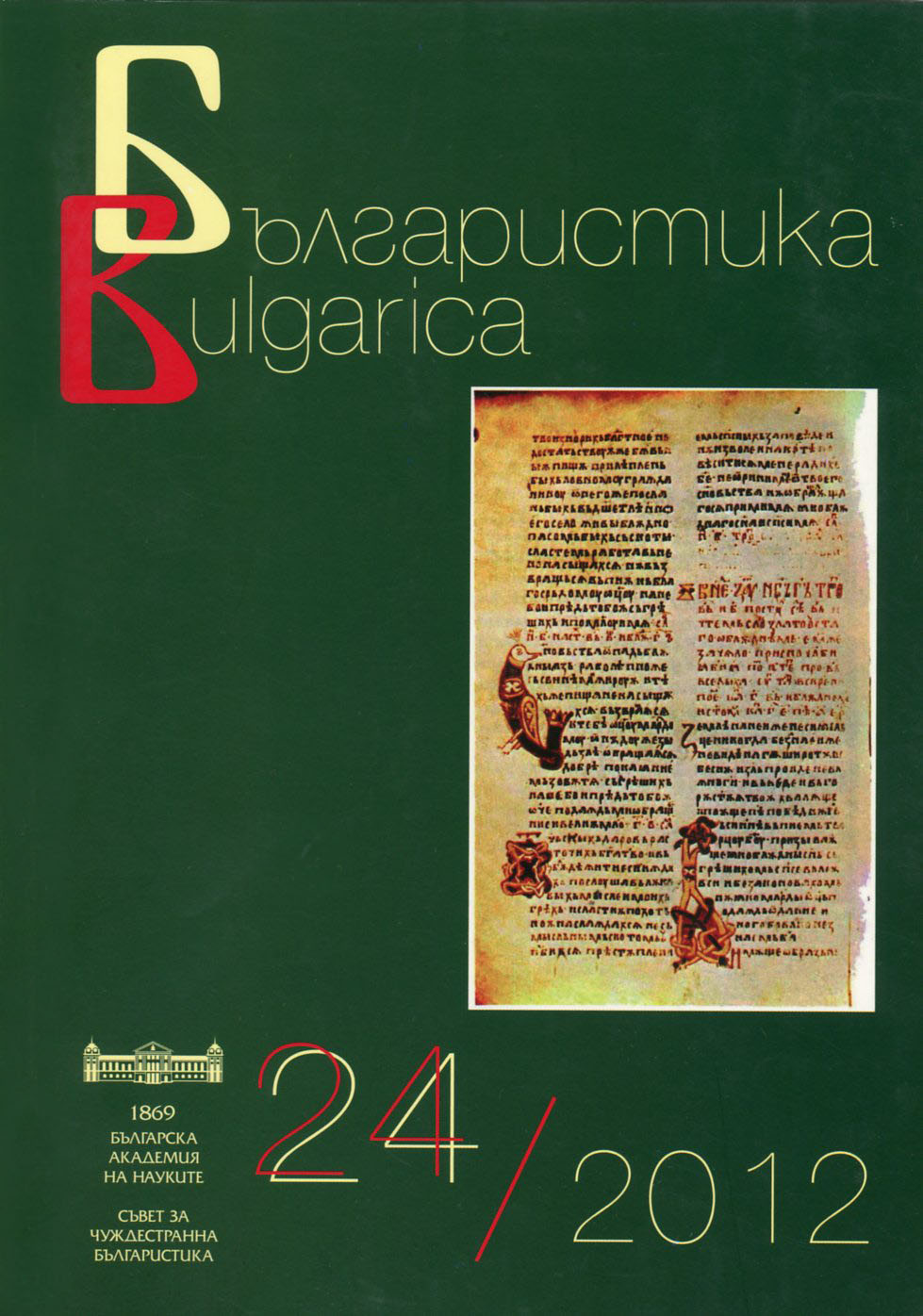
Научна периодика 2011–2012 г.
Content of the main Bulgarian scientific journals for the current year in linguistics, literature, history, folklore, ethnography, archaeology and art studies
More...We kindly inform you that, as long as the subject affiliation of our 300.000+ articles is in progress, you might get unsufficient or no results on your third level or second level search. In this case, please broaden your search criteria.

Content of the main Bulgarian scientific journals for the current year in linguistics, literature, history, folklore, ethnography, archaeology and art studies
More...
Determining the structuring models of communication in the plane of cinema art – the paradigms of communication in the field of art that mediate not only the interactions in the ‘author-film-audience’ relation but also function as implicit premises, both in the creation of a film and the establishment of its expressional, emotional and meaning consistency, and in its being perceived, experienced and understood by each separate viewer, as well as by the audience as a whole – would contribute to the restored legitimacy of cinema as an art in the current informational and cultural contexts.
More...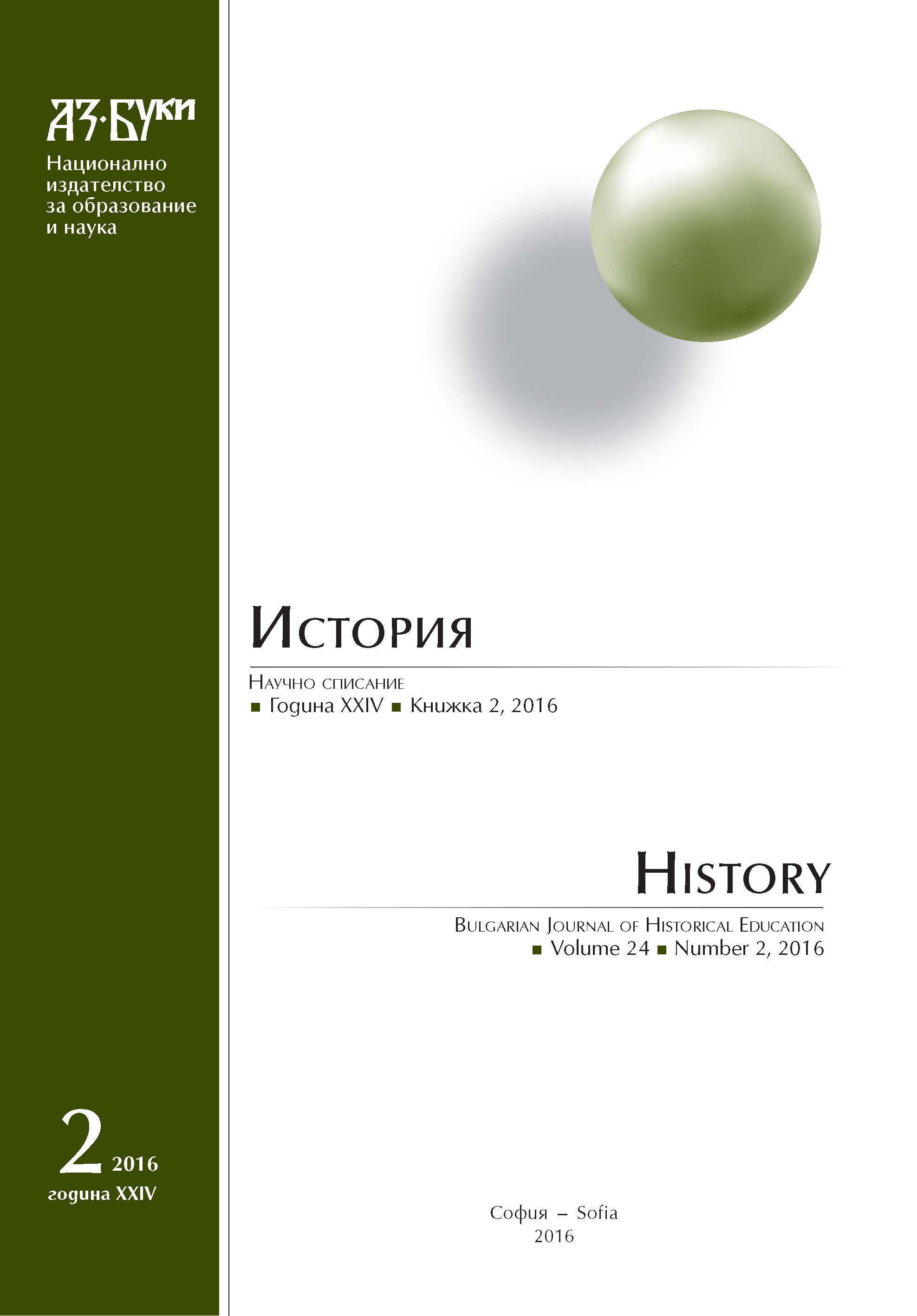
The aim of this article is to present the results of the author’s profound investigation on German-Bulgarian cultural relations since the beginning of the 20th century to the mid-1940s of the 20th century and to give an assessment of the cultural contacts between both countries in the context of Bulgarian political and historical development. The article reveals different aspects of the cultural contact between Germany and Bulgaria in the fields of theatre, fine and applied arts. The author emphasizes the role of the training of many Bulgarian artists in German art institutions and the establishment of German-Bulgarian cultural associations. The article is based on the findings of published studies as well as on the author’s own research undertaken in many museums, archives, private and institutional art collections, situated in Germany and Bulgaria.
More...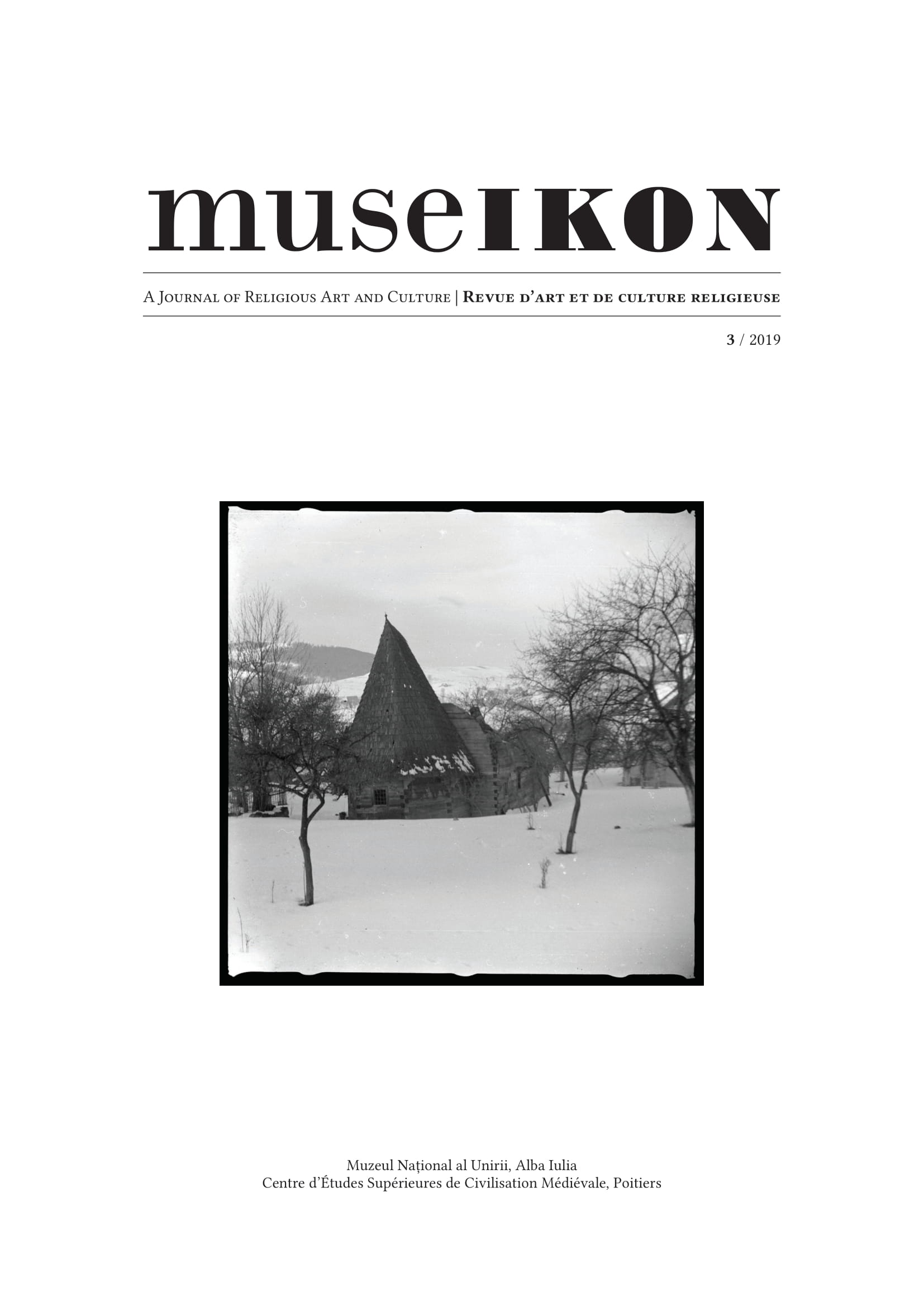
Following in the footsteps of the two conferences of Poi-tiers (Heresy and Bible translation in the Middle Ages and at the dawn of the Renaissance, October 27, 2017, Centre d’Études Supérieures de Civilisation Médiévale) and Alba Iulia (Vernacular Psalters and the Early Rise of Linguistic Identities, June 27-28, 2018, Museikon), the nucleus of researchers already collaborating in a previous Museikon pu-blication (Vernacular Psalters and the Early Rise of Linguis-tic Identities: The Romanian Case, Bucharest, dark Publi-shing / Muzeul Național al Unirii Alba Iulia, ‘Museikon Stu-dies’, 1, 2019) decided to expand the scope of their commoneffort and see how a comparative philological approach would work on a practical level. The idea of this collective research and paper came naturally in the early stages of thepreparation of a future project dealing with a comparativeapproach of vernacular Psalters and Gospels both in rela-tion to their high-prestige Greek, Latin, or Church Slavonicsources, and at an intravernacular level, where some of them could have influenced the others. The comparisons bet-ween vernacular translations are useful for the identification of translation clusters active in several languages and for the reconstruction of a pan-European forma mentis which shaped the early vernacular renderings of the Bible.The present paper is also an editorial test. While experi-menting with format, the contributors equally tested how common publications such as this may be replicated in thenear future, in a journal dedicated only to a comparativephilological study of early Bible translations. The current subject (musical instruments terminology) was chosen in order to provide a representative prospective section ofThe Musical Instruments in the Early Vernacularagakcmmcpcpgccaecerhkisickvmuvathe entire corpus. New collaborators were invited to join inand contribute to the exploration of the more difficultaspects of the study, thus anticipating the opening of philology to a wider array of disciplines, according to the needs of the explored realia. Since the topic is far from being exhausted and since many European languages are not yet dealt with, the study will be continued in the next issue of Museikon.
More...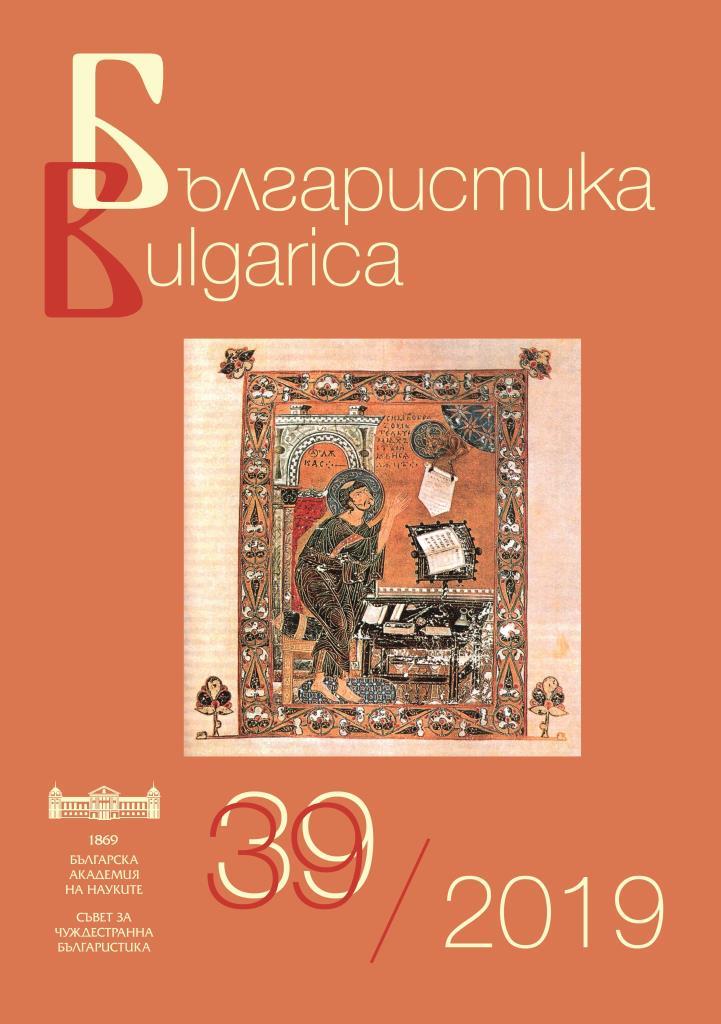
Selected bibliography in the field of Bulgarian Studies published in the current year.
More...
Content of the main Bulgarian scientific journals for the current year in linguistics, literature, history, folklore, ethnography, archaeology and art studies.
More...
Data about scientific events in the field of the humanities in Bulgaria in 2019
More...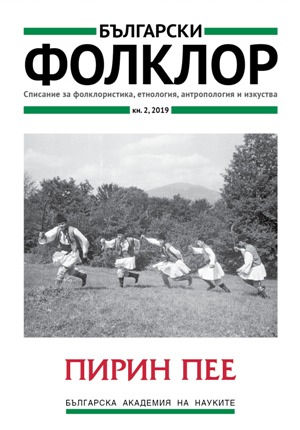
The text analyzes specific examples from the festive life of the Hungarian cities of Mohács and Debrecen and in particular different manifestations of the contemporary masquerade game. The author pays attention to the construction of urban identity (part A) and searches for basic characteristics of the urban cultural space as a place of national memory (part B). The field research method is applied for the purposes of the present study. In conclusion it is noted that it is especially important for the participants to identify with a particular masquerade community that builds additional social networks outside of the carnival chronotope. The consistency with the culture and traditions of the city is also significant as far as these are manifestations of urban identity. The national identity finds expression in symbols and signs of the national manifested under conditions of deterritorialization. Through the self-perception of the people in the city (as people tied to it and belonging to it) and through their identification with it, the urban social space acquires its anthropological dimensions contributing to its unique spirit and particularity (genius loci).
More...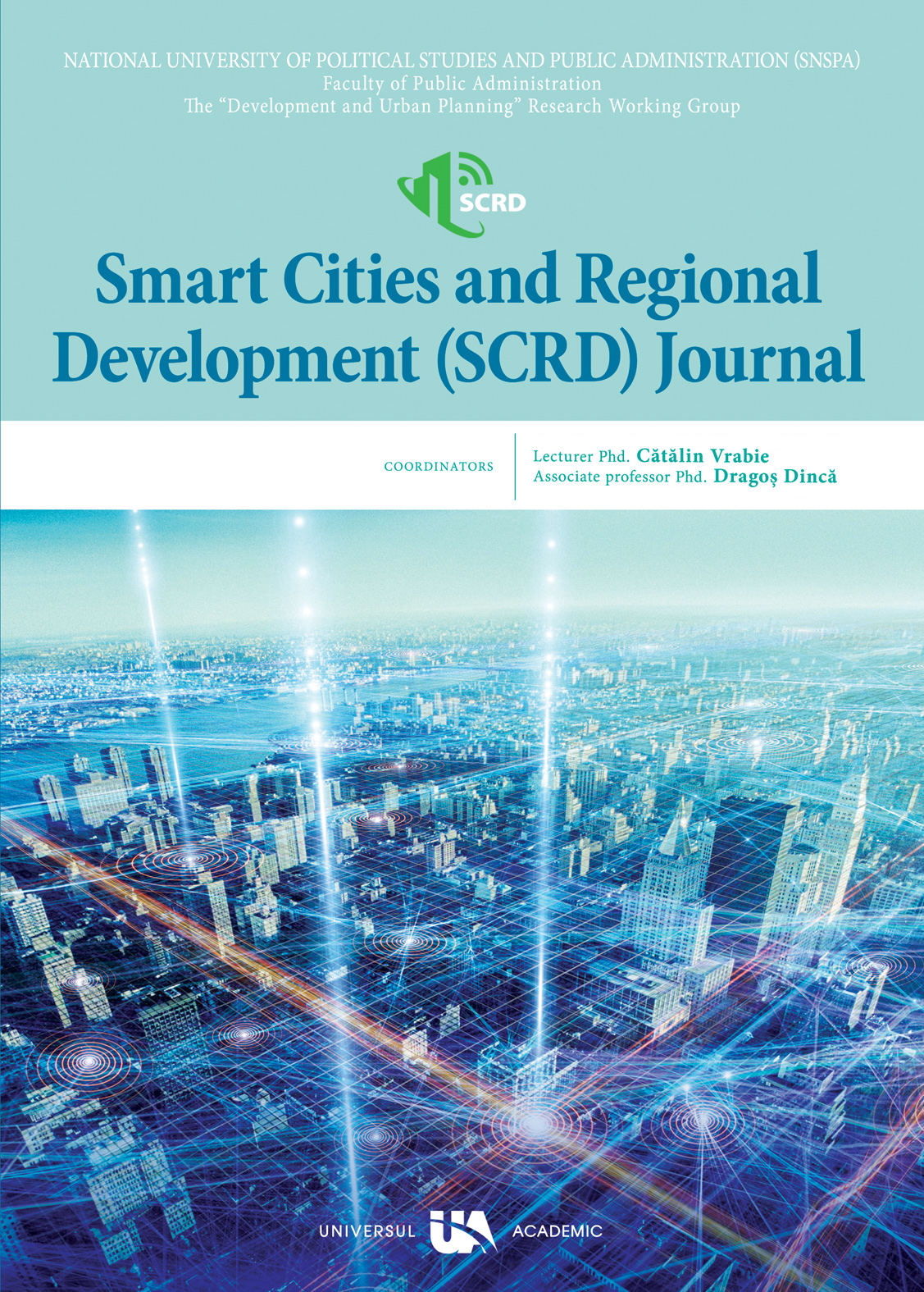
Preamble: The worldwide trend of population ageing and in particular at European level produces paradigm shifts from which architecture is not an exception. According to UN, the percentage of older people (65+) will increase from 9% in 2019 to 16% in 2050 At the European level, the ageing trend is even more pronounced, in 2050 it is estimated that the percentage of older adults will reach 28%. This trend of demographic ageing is accompanied by the trend of urbanization.Objective: The paper investigates interdisciplinarly the way in which the architecture of the cities can intelligently support an active and healthy ageing, bringing into discussion the perspective of the age in the architecture.Preliminary studies: The paper starts from the relation of the concept of age-friendly with cities, architecture, communities, public space and is based on a critical appraisal of the literature in this research niche.Materials and Methods: The research is interdisciplinary, architecture-medicine-psychology-social gerontology-kinetotherapy, describing the aspects of ageing that architecture must take into account. Case studies are used, moving from residential to public space.Results: The present research proves the importance of the built environment both urban level and architectural object for a healthy lifestyle and a continuous participation in the city life. Models of good practice in Western Europe that provide opportunities for health, participation and security are revealed.Conclusions: The perspective of the age in architecture represents a change of paradigm essential for adapting the cities of the future. It is imperative the built environment to take into account the new age pyramid, to support the extension of active and healthy life and to contribute to the compression of morbidity. The architecture of the future’a cities should encourage active ageing, optimizing the opportunities for health, autonomy, participation and security in order to increase the quality of life and well-being.
More...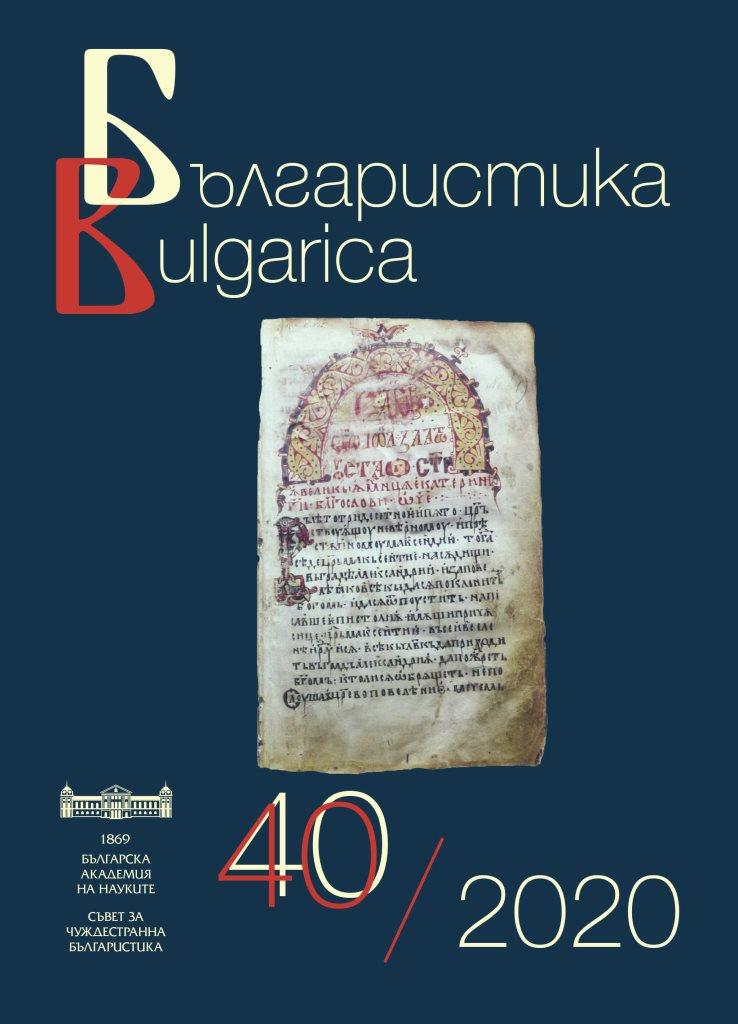
Content of the main Bulgarian scientific journals for the current year in linguistics, literature, history, folklore, ethnography, archaeology and art studies
More...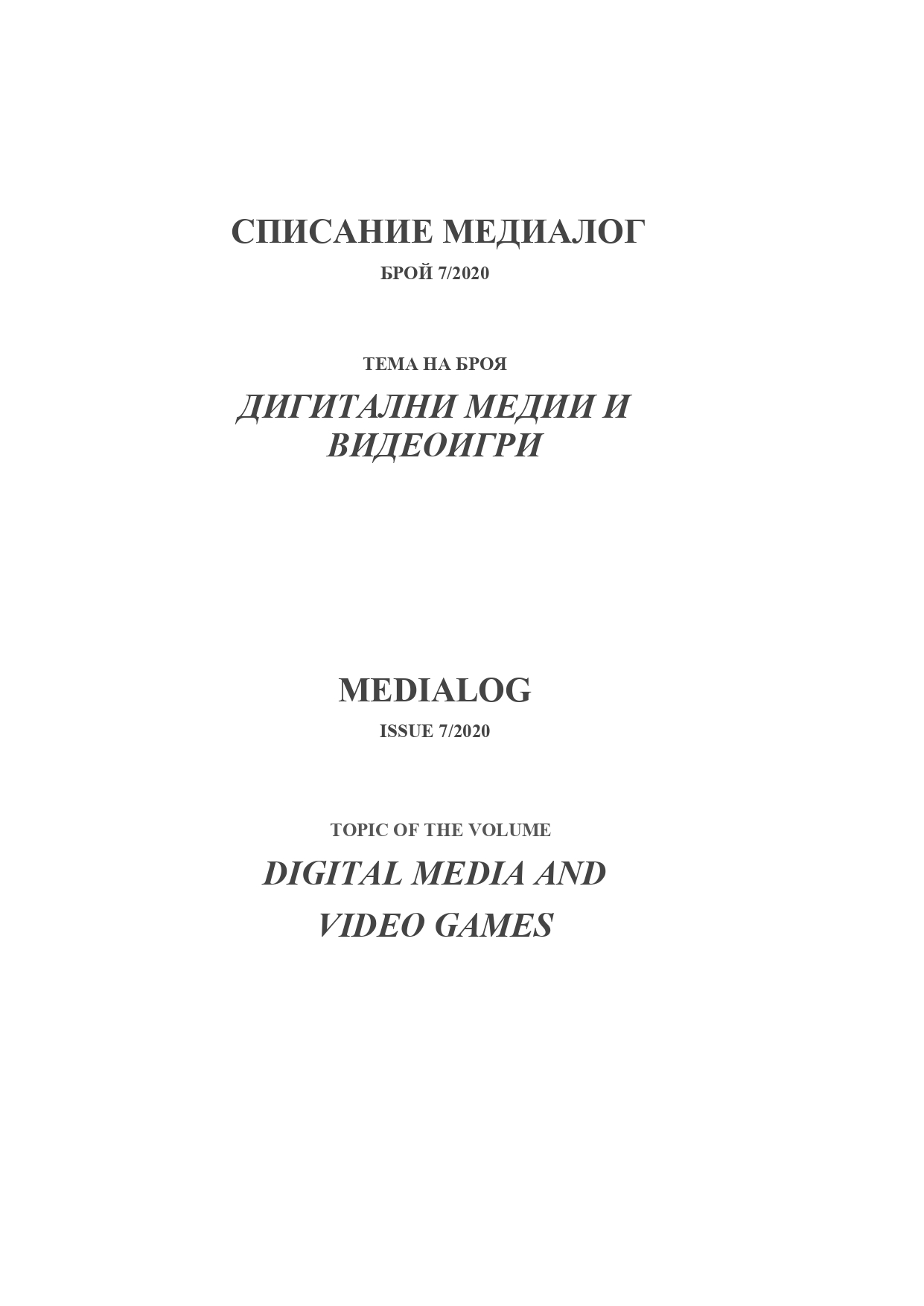
The article’s goal is to imagine a productive form of teaching creative writing as part of a Master's program in fields only remotely connected to literature and literary studies, such as digital media and videogames research. The text begins with a discussion on talent as the ability to perceive and submit to adequate and working models of writing. The topic is then further developed by analyzing talent within the framework of specific creative tools such as close reading and worldbuilding. Finally, the idea of creative writing as a model oriented and model guided activity is connected to the nature of the computer game as a space inhabited by a variety of new discourses, which the player - like a careful and attentive reader – has to learn to read and work with, thus making them part of her personal experience.
More...
Ralitsa Kovachevs’s new book on international journalism continues the story of how Bulgarian media cover world topics and problems. The author focuses on the opportunities for “getting to know the spatially distant, which is actually very close in time”, provided by professional journalism.
More...
A review of the collection “The Soft power of popular music in media (by examples from Bulgaria and the Balkans”, comp. Lozanka Peicheva. Sofia: “St. Kliment Ohridski” University Press, 2020 (160 p.). The collection is part of research collective’s work on the eponymous scientific project “The soft power of popular music in media (by examples from Bulgaria and the Balkans”, financed by the Bulgarian national science fund.
More...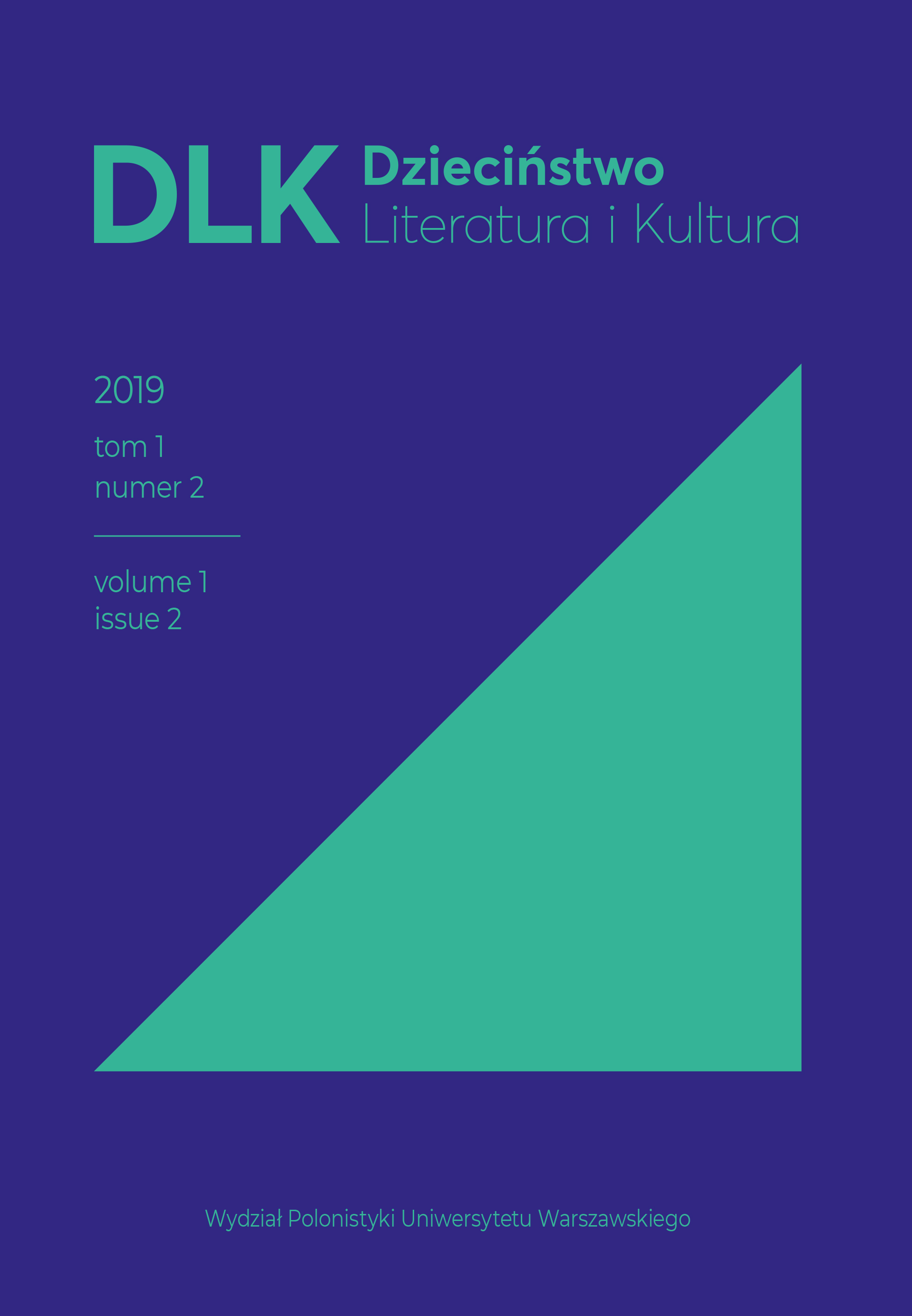
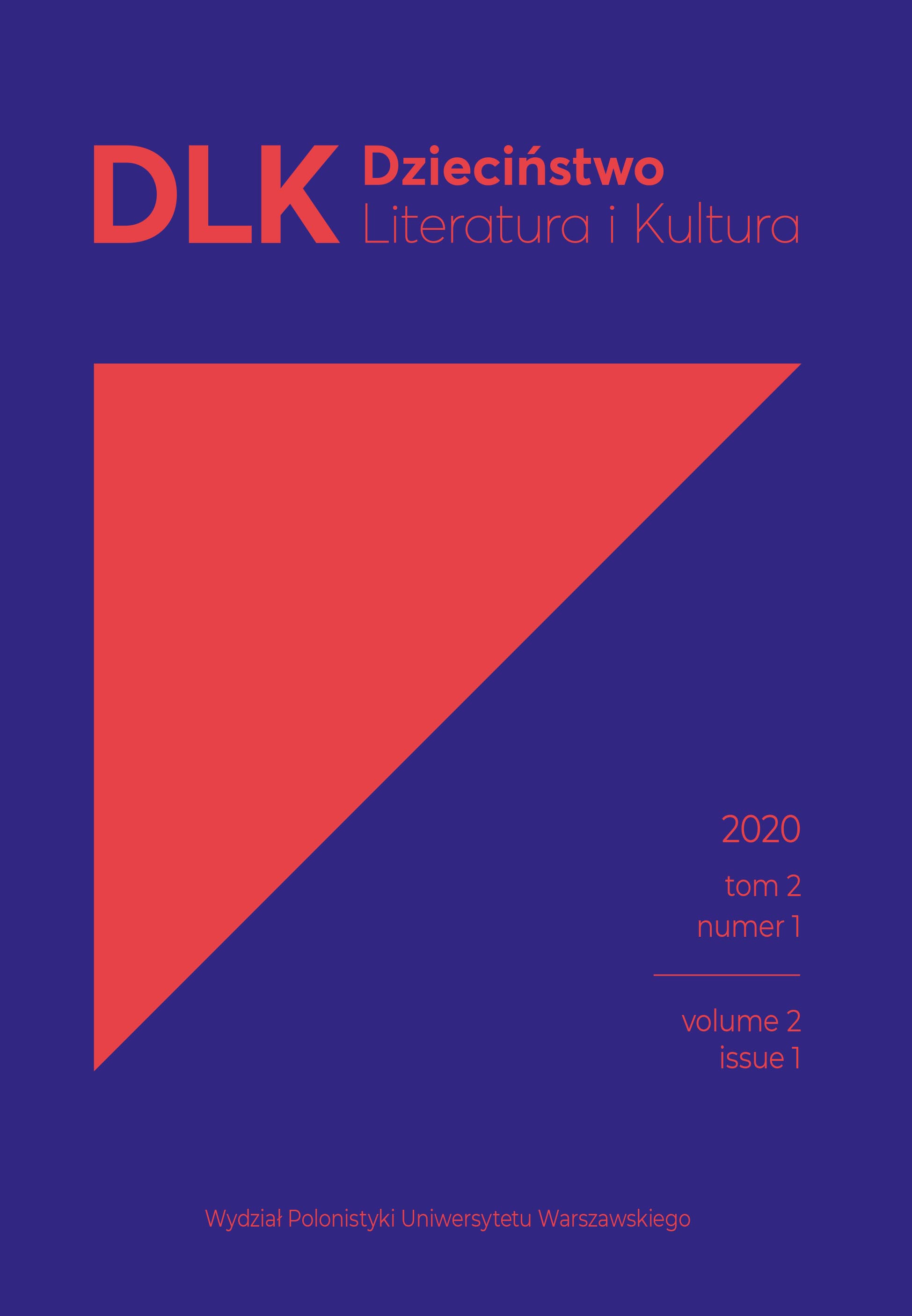
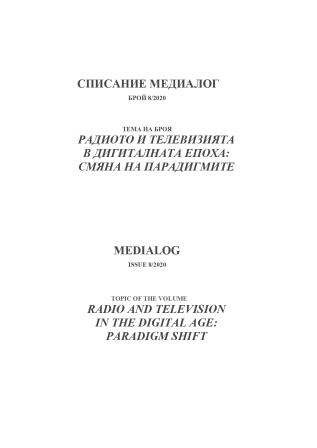
The study focuses on part of the submerged heritage under the waters of several dams in Bulgaria (Ovcharitsa, Rozov Kladenets and Tsonevo). Popular folk singers (Stefka Sabotinova and Penka Pavlova) and singing groups and local singers („Sminana Kitka“, Silvia Dimitrova), who keep songs from the sunken villages, are presented. The focus is on research and knowledge of folklore as a pillar of memory, in the case of the village of Asparuhovo, near and under the waters of Tsonevo Dam. Emphasis is placed on the role of various media and especially digital new media spaces for the „emergence” of the traditional song heritage from the villages left at the bottom of various dams.
More...
Two decades after the publication of the Green Paper on the convergence (1997), radio and television are not only creating and disseminating more and more digital content through digital technologies but are striving for an increasingly integrated online presence. Along with search engines, internet platforms have become an important intermediary between media service providers and audiences whose habits have changed dramatically in the second decade of the 21st century. Broadcast media (BM) have no choice but to be where the users of media content are - content of different quality, origin, purpose, logic of distribution. At the same time, audiences are overwhelmed with mis- and disinformation, which often comes from fake pages and profiles posing as legitimate media organizations, and set against trustworthy media and journalists from public figures. This creates an information crisis, which can be counteracted both by legislative measures and by empowering the audience with media literacy. And while the implementation of educational reform is a slow process, the BM, which still have the largest audiences and are most trusted, can play an essential role in increasing the media literacy of citizens. A function of great public importance, at the same time entirely in their interest.
More...
For the first time the Bulgarian Radio and Television Law include provisions related to video sharing platforms. Platforms are a new type of intermediary. Do we know enough about how platforms influence global social and political processes? Internet companies contribute to democratization of access to knowledge and culture. But when the platform is the message, media ecosystems no longer function as we know it. In the time of global platforms, competition is limited. Platforms negatively affect traditional business models of the creative industries and the media, allow tech giants to gain enormous economic power based on capitalization of clients data, influence global social and political processes and spread disinformation and illegal content. What did the revision of the Audiovisual Media Services Directive (2018) provide for and what can be expected from the next acts of the legislators?
More...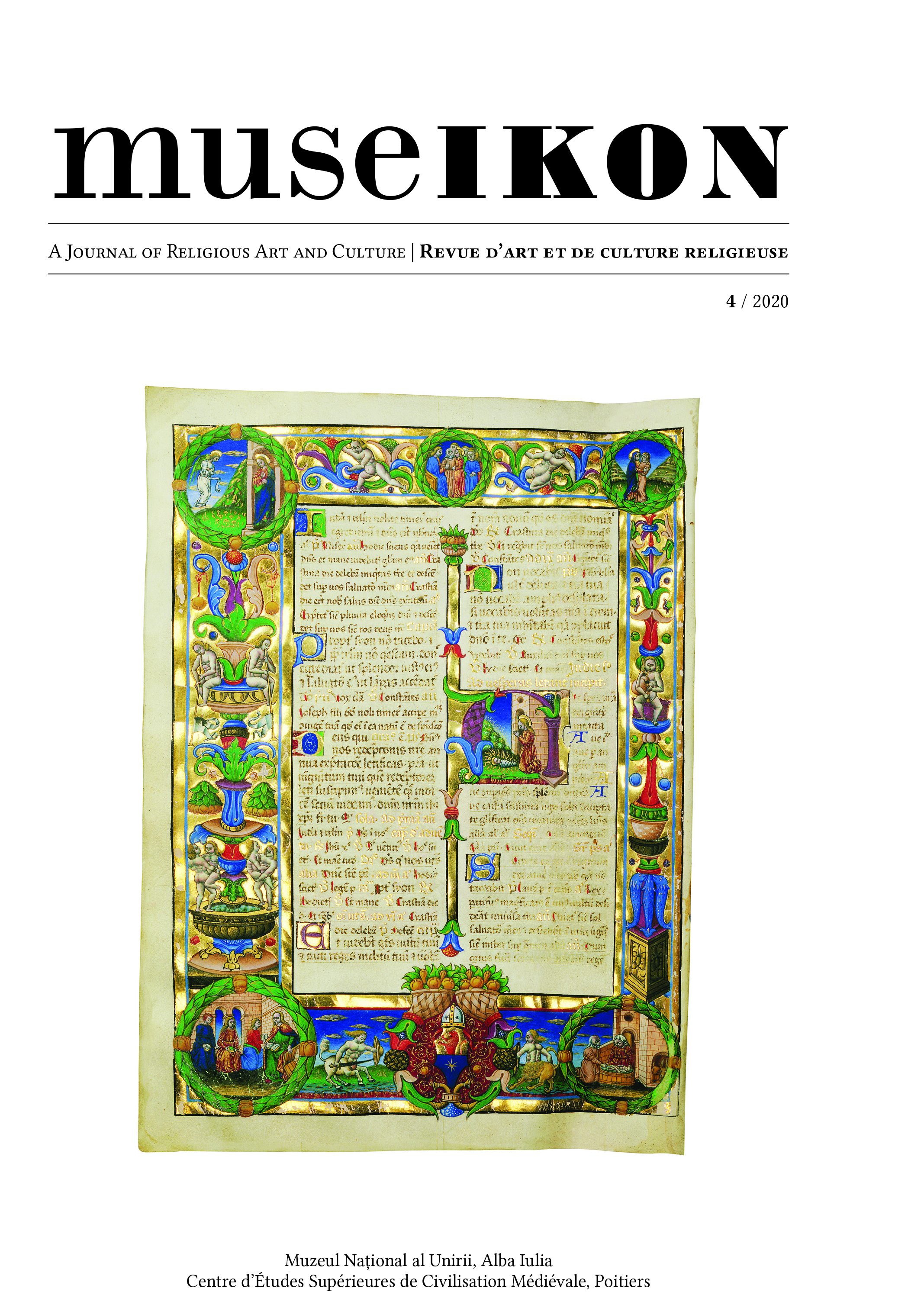
L’étude examine les raisons pour lesquelles les icônes russes, ou imitant un style russe, sont devenues des objets à la mode, commercialisés en Grèce du milieu du XIXe au début du XXe siècle. Elle met ainsi en lumière un phénomène social : la diffusion et la popularité des icônes russes dans ce pays, mais aussi au Mont Athos – une région considérée comme étant le ‘gardien’ de la tradition orthodoxe et de l’authenticité qui faisait encore partie de l’Empire O1oman pendant l’époque en question. Les conséquences de ce1e circulation sont également analysées. Ce phénomène culturel a mené à une banalisation du commerce des icônes et à une confusion croissante entre le domaine de la spiritualité et celui des transactions économiques. La production d’icônes émerge donc comme une arène d’intérêts concurrents; ce qui révèle l’asymétrie de l’influence que la Grèce (un état récemment fondé et économiquement instable) et l’Empire russe exerçaient dans le monde orthodoxe.
More...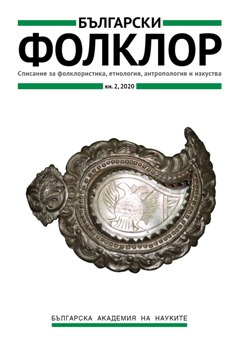
Intensified cultural exchange in the twenty-first century lead to a specific process of globalization of musical folklore. That is why the preservation of valuable archaic traditions demands active endeavours.In 2018, in the Bulgarian village of Chavdar, an interactive Folklore Centre was founded. It offers interesting ways of collecting, archiving, preserving and exhibiting local cultural traditions. In the Centre, old phenomena intertwine with new technologies and museum exhibits “come to life” by means of interactive activities designed mainly for children and young people. In 2019, the team of the Centre continued their work on widening and completing the exhibition and the interactive activities. A central place in the new developments is given to music, dancing and children’s games.
More...